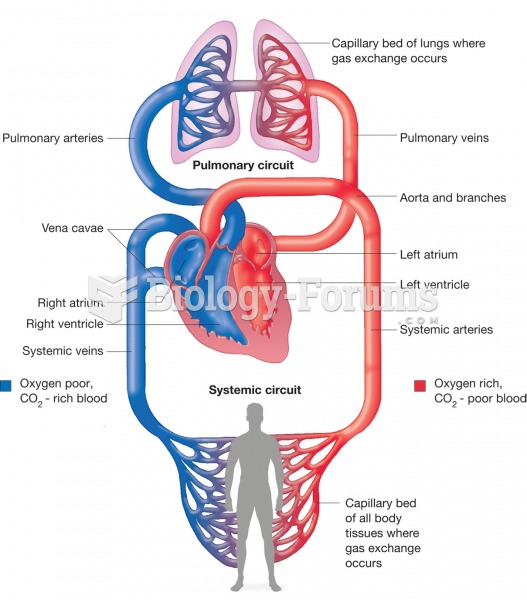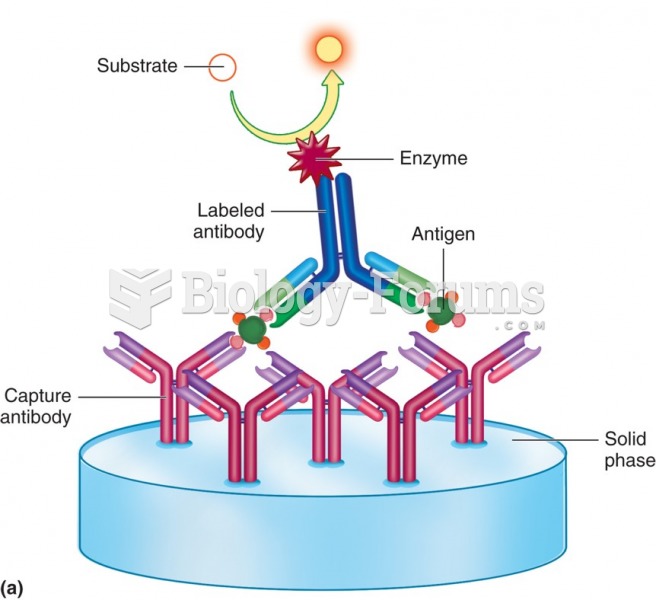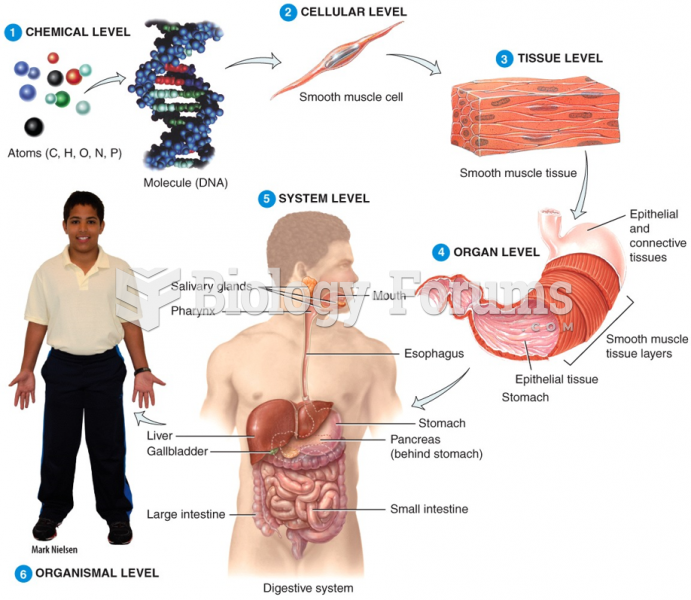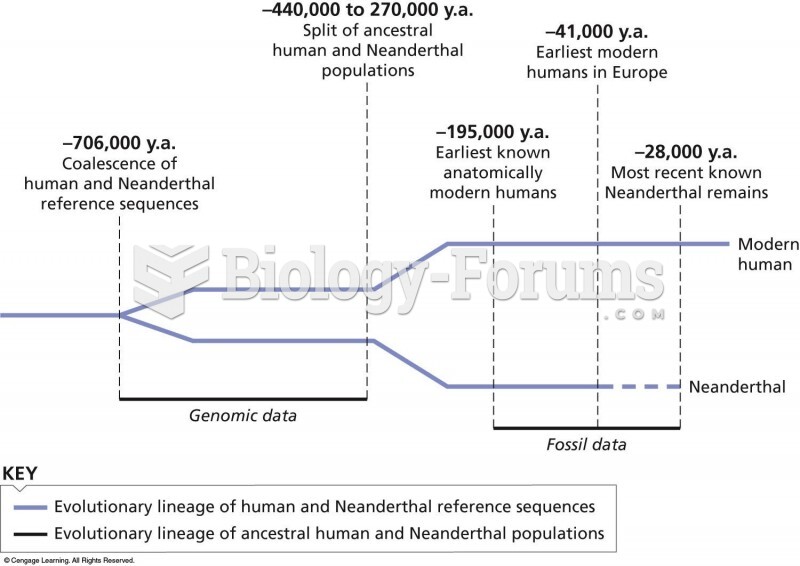|
|
|
Bacteria have flourished on the earth for over three billion years. They were the first life forms on the planet.
The familiar sounds of your heart are made by the heart's valves as they open and close.
Human stomach acid is strong enough to dissolve small pieces of metal such as razor blades or staples.
The most common childhood diseases include croup, chickenpox, ear infections, flu, pneumonia, ringworm, respiratory syncytial virus, scabies, head lice, and asthma.
Hippocrates noted that blood separates into four differently colored liquids when removed from the body and examined: a pure red liquid mixed with white liquid material with a yellow-colored froth at the top and a black substance that settles underneath; he named these the four humors (for blood, phlegm, yellow bile, and black bile).







